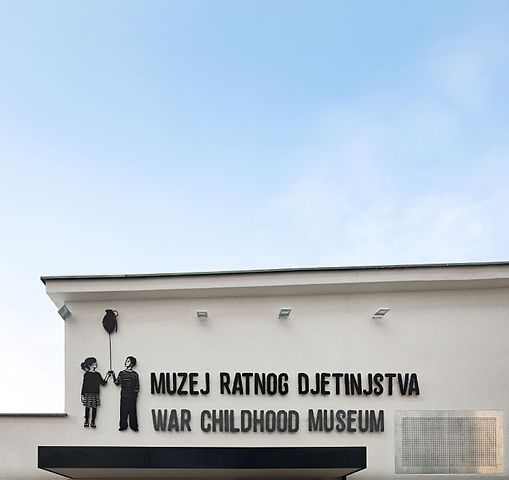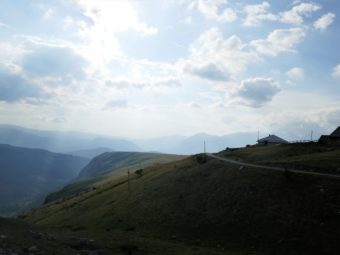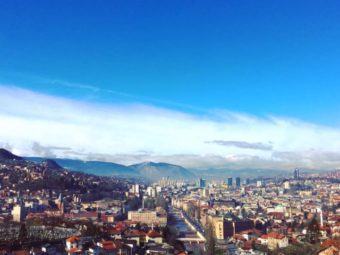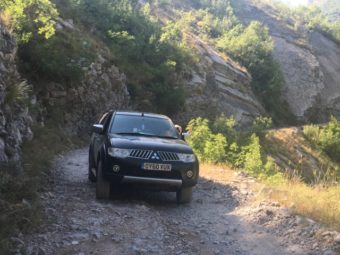The War Childhood Museum has received international recognition.
Photo by Anida Krečo
The Great Balkan Ride begins in Sarajevo and besides meeting everybody at the opening party, there’s a lot for teams to do, see, and eat. Arriving a day or two before the start of the event will give you a chance to learn about the Bosnian capital’s traumatic, but fascinating, history, from the shooting of Franz Ferdinand in 1914 to the Bosnian War of the 1990s. We highly recommend visiting the War Childhood Museum, opened in 2017, which has quickly become regarded as one of the essential sites in the city.
The Siege of Sarajevo

A lifetime, yet alone the short time we spend in Sarajevo, is not long enough to understand the extent to which Bosnia suffered during the 1990s. You can read about Balkan history before you arrive, but people still argue about how Yugoslavia went from relative prosperity into chaos, and how Sarajevo, which had hosted the Winter Olympics in 1984, less than a decade later became the site of the longest siege of a capital city in the history of modern warfare. From April 1992 to February 1996, Sarajevan citizens were held hostage by Bosnian Serb forces; thousands died, and nobody suffered more than the city’s children.
The War Childhood Museum

Learning about the siege from children’s perspective proves moving but also informative. While the complex causes of the conflict can, and are, fought over, nobody can deny the harm that the siege caused families, who were under constant threat from attack — whether at home, school, or the marketplace — and had to make do with limited food and smuggled supplies. The war penetrated all aspects of children’s lives, and thus their recollections can provide an unvarnished and unbiased account of history.
Items of Childhood

However, the concept behind the museum is to explain children’s experiences of the war not merely though their memories, but their items. Many survivors of the conflict donated belongings, such as toys, dolls, and books. Each items tells a story, and even more so in the case of collected diaries, letters, and newspapers from the time. There are also videos and text on show, for more detailed recollections of survivors’ experiences. If our recommendation isn’t enough, the War Childhood Museum was recently awarded the 2018 Museum Prize, selected by the Council of Europe.
Memories of War Elsewhere in Sarajevo

There are many other sites in Sarajevo worth seeing for different perspectives on the Bosnian war. Gallery 11/07/95 is a particularly powerful example: it tells the story of the genocide in Srebrenica, predominantly through photography. The Tunnel Museum, on the Western edge of the city, reveals the history of what was the one way out of wartime Sarajevo, and visitors can even see a remaining section of the tunnel. Of course, the affects of war are visible without entering museums. Walls still contain bullet holes and, as pictured above, hillside cemeteries reveal in physical form the scale of the toll the conflict took on the city.





Leave a Reply